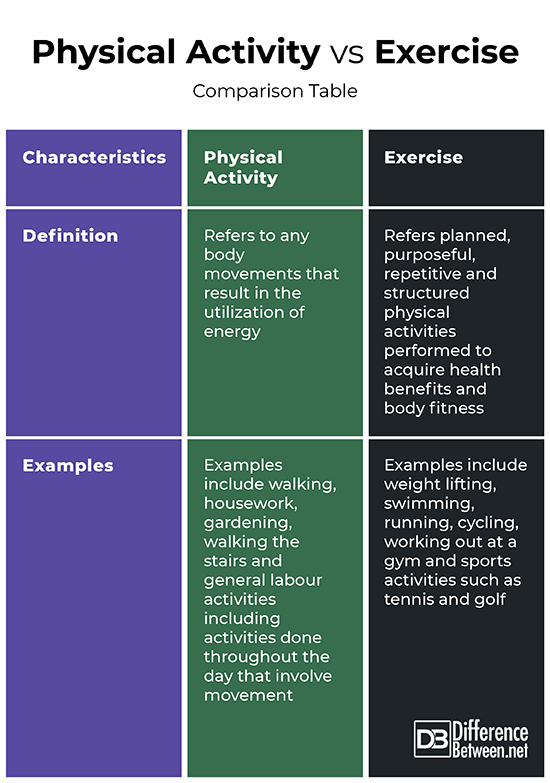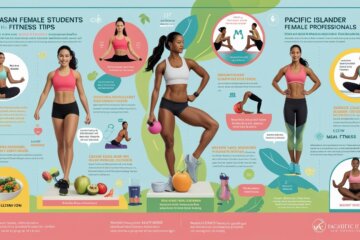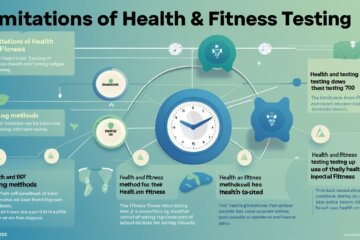” Ultimate Guide to Exercise and Physical Fitness “ Exercise is a specific physical activity aimed at improving fitness, which is a state of overall health and well-being.
Exercise and physical fitness are often used interchangeably but have distinct meanings. Exercise refers to planned, structured activities like running, swimming, or lifting weights. These activities aim to enhance muscle strength, endurance, and cardiovascular health. Physical fitness, on the other hand, is a broader term.
It encompasses overall health and well-being, including the ability to perform daily activities with vigor. Achieving physical fitness involves regular exercise, balanced nutrition, and adequate rest. By understanding the difference, individuals can better tailor their routines to meet personal health goals and improve their quality of life.
Demystifying Exercise And Physical Fitness
Understanding the difference between exercise and physical fitness can be confusing. Both terms are often used interchangeably, but they are different. This section will clarify these concepts, helping you understand their importance.
Exercise: A Focused Approach
Exercise is any planned, structured, and repetitive activity. The primary goal is to improve or maintain one or more components of physical fitness. Activities like running, weight lifting, and yoga are examples of exercise.
- Planned: You schedule it and make time for it.
- Structured: It follows a specific routine or pattern.
- Repetitive: You do it regularly to see results.
Exercise focuses on specific goals such as improving strength, endurance, flexibility, or balance. Exercise targets these objectives, whether you aim to run faster, lift heavier weights, or stretch further.
Physical Fitness: The Bigger Picture
Physical fitness is a broader concept. It refers to the overall state of your health and well-being. Physical fitness encompasses multiple components:
| Component | Description |
| Cardiovascular Endurance | Your heart and lungs’ ability to fuel your body with oxygen. |
| Muscular Strength | The amount of force your muscles can produce. |
| Muscular Endurance | Your muscles’ ability to perform tasks over time. |
| Flexibility | Your joints’ ability to move through their full range of motion. |
| Body Composition | The ratio of fat to lean tissue in your body. |
Physical fitness is achieved through exercise, diet, and rest. It represents the overall health and functionality of your body. Unlike training, which focuses on specific activities, physical fitness is about your body’s ability to function efficiently and effectively.
Understanding these differences can help you set better fitness goals. Knowing the distinction is critical in whether you aim to improve specific skills or overall health.

Historical Evolution Of Exercise And Fitness Concepts
The concepts of exercise and physical fitness have evolved. Societies have transformed their views on health and activity. Understanding this evolution helps us appreciate current fitness trends.
From Ancient Regimens To Modern Fitness
In ancient times, physical activity was essential for survival. People engaged in hunting, gathering, and farming. These activities were their forms of exercise.
Ancient civilizations like Greece and Rome recognized the benefits of structured physical activity. They introduced organized sports and gymnasiums. Greek athletes trained for the Olympics, emphasizing strength and endurance.
During the Middle Ages, physical fitness took a back seat. The focus shifted to survival and manual labor, and most people did not prioritize exercise.
The Renaissance period revived interest in physical fitness. Scholars and artists praised the human body. They encouraged activities like dancing and fencing.
Modern fitness began in the 19th Century. Industrialization reduced physical labor, and people sought new ways to stay active. Gymnastics, calisthenics, and sports gained popularity.
Shaping Societal Views On Health And Activity
Societal views on health and activity have changed over time. In ancient Greece, physical fitness was essential for military training. Citizens value a robust and healthy body.
During the Renaissance, the human body was celebrated in art and literature. People believed in achieving a balance between mind and body.
The Industrial Revolution dramatically changed lifestyles. Sedentary jobs became common, and people recognized the need for intentional exercise to stay healthy.
In the 20th Century, public health campaigns promoted physical activity. Governments and organizations encourage people to exercise regularly.
Today, fitness is a global phenomenon. Gyms, fitness classes, and online workouts are widely available, and people understand the importance of staying active for overall health.
| Period | Focus on Fitness |
| Ancient Times | Survival, Hunting, Gathering |
| Ancient Greece | Olympics, Gymnasiums |
| Middle Ages | Manual Labor, Minimal Exercise |
| Renaissance | Dancing, Fencing |
| 19th Century | Gymnastics, Calisthenics |
| 20th Century | Public Health Campaigns |
| Modern Era | Gyms, Fitness Classes, Online Workouts |
Anatomical And Physiological Distinctions
Understanding the difference between exercise and physical fitness requires a look at anatomical and physiological distinctions. Exercise is a specific physical activity that targets muscle groups. Physical fitness is a broader term that encompasses overall health and well-being.
Muscular Engagement In Exercise
Exercise involves specific muscle groups. For example, weightlifting targets the biceps and triceps. Cardio exercises like running engage leg muscles and the heart. Each exercise type activates different muscle fibers.
- Strength training focuses on building muscle mass.
- Cardiovascular exercises improve endurance.
- Flexibility exercises enhance the range of motion.
Muscle engagement during exercise boosts metabolism and supports weight management. Consistent exercise leads to muscle growth and strength.
Systemic Health And Fitness
Physical fitness affects systemic health. It improves heart function, lung capacity, and overall energy levels. Fitness includes aerobic capacity, muscle strength, and flexibility.
| Aspect | Exercise | Physical Fitness |
| Focus | Specific muscles | Overall health |
| Goal | Muscle engagement | Systemic improvement |
| Examples | Weightlifting, running | A balanced diet, regular exercise |
Maintaining fitness improves mental health and reduces stress. It also improves quality of life and aids in the prevention of disease.
Psychological Impact And Benefits
Both exercise and physical fitness have profound effects on mental health. They improve physical well-being and offer significant psychological benefits. Understanding these can motivate you to engage in regular activities.
Mental Health Advantages Of Regular Exercise
Regular exercise can significantly improve mental health. It helps in reducing symptoms of depression and anxiety. Physical activity releases endorphins, known as the “feel-good” hormones.
Exercise also enhances self-esteem. Achieving fitness goals boosts confidence. This sense of accomplishment promotes a positive self-image.
Additionally, physical activity helps in managing stress. It lowers cortisol levels, which reduces stress. Exercise also improves sleep patterns, leading to better mental clarity.
Cognitive Improvements From Overall Fitness
Overall, fitness contributes to cognitive enhancements. Regular physical activity improves memory and learning. It promotes neuron proliferation by increasing the blood supply to the brain.
Fitness also helps with better decision-making. Physical activities improve focus and concentration, making daily tasks more accessible and efficient.
In addition, regular fitness routines enhance creativity. Exercise stimulates brain function, leading to improved problem-solving skills. This makes you more innovative in your approach to challenges.
| Psychological Benefits | Exercise | Overall Fitness |
| Mental Health | Reduces anxiety and depression | Improves self-esteem and confidence |
| Stress Management | Releases endorphins | Lowers cortisol levels |
| Cognitive Function | Enhances memory | Boosts creativity and problem-solving |
Understanding these psychological benefits can be a crucial motivator. Engage in regular exercise to enjoy a better mental state. Maintain overall fitness for cognitive improvements and a happier life.
Quantifying Exercise Vs. Fitness
Understanding the difference between exercise and physical fitness is crucial. Exercise refers to activities that improve your body through movement, while physical fitness measures how well your body performs these activities.
Measuring Workout Intensity
Workout intensity can be measured using various methods. One way is to monitor your heart rate. A higher heart rate usually means more intense exercise. Use a heart rate monitor or manually check your pulse.
Another way to measure intensity is the Rate of Perceived Exertion (RPE). RPE uses a scale from 1 to 10. A higher number means more strenuous exercise.
The talk test is also helpful. If you can talk but not sing, the exercise is moderate. If you can’t say more than a few words, it’s vigorous.
Assessing Fitness Levels
Fitness levels can be assessed in many ways. One standard method is the VO2 max test, which measures how well your body uses oxygen during exercise. A higher VO2 max means better fitness.
Another method is the 1-mile walk test. Time how long it takes to walk a mile. A shorter time indicates better fitness.
Strength tests like push-ups and sit-ups are also helpful. Count how many you can do in one minute. More repetitions mean better strength.
| Measurement Method | Exercise | Fitness |
| Heart Rate | Yes | No |
| RPE | Yes | No |
| Talk Test | Yes | No |
| VO2 Max Test | No | Yes |
| 1-Mile Walk Test | No | Yes |
| Strength Tests | No | Yes |

Lifestyle Integration: Habits And Routines
Understanding the difference between exercise and physical fitness can help you build a healthier lifestyle. Both are important, but how you incorporate them into your daily life makes a big difference. Let’s explore how you can integrate these into your habits and routines.
Incorporating Exercise Into Daily Life
It is optional to make incorporating exercise into your routine difficult. Here are some simple ways to do it:
- Take the stairs instead of the elevator.
- Walk or bike to work.
- Set reminders to stand up and stretch every hour.
- Join a local sports team or fitness class.
- Use a standing desk while working.
These small changes can add up and help you stay active throughout the day. Consistency is key. Make these habits part of your daily routine.
Maintaining Fitness Through Lifestyle Choices
Maintaining fitness involves making intelligent lifestyle choices. Here are some tips to keep you on track:
- Eat a balanced diet rich in fruits and vegetables.
- Stay hydrated by drinking plenty of water.
- Get enough sleep to allow your body to recover.
- Avoid smoking and limit alcohol intake.
- Stay active even on rest days with light activities like walking.
Making these choices can help you maintain your fitness levels. It’s about creating a balanced lifestyle that supports your overall well-being.
Real-life Examples And Case Studies
Understanding the difference between exercise and physical fitness can be complex. Real-life examples and case studies make it easier to grasp these concepts. This section will explore examples from athletes and non-athletes to illustrate the difference.
Athletes: Exercise Masters
Athletes often engage in intense exercise routines. Their goal is to enhance specific physical abilities. Take a look at Usain Bolt, for example:
- Exercise: Bolt’s training involves sprinting, strength training, and agility drills.
- Physical Fitness: His fitness level allows him to run at incredible speeds.
Bolt’s exercise regimen is designed to improve his speed and strength. This shows how targeted exercise can lead to high physical fitness.
Another example is Simone Biles:
- Exercise: Biles performs routines that include tumbling, balance, and flexibility exercises.
- Physical Fitness: Her fitness levels enable her to excel in gymnastics.
Biles’ exercises are specific to gymnastics, leading to exceptional physical fitness.
Longevity And Fitness In Non-athletes
Non-athletes also benefit from exercise, which contributes to their physical fitness. Consider an elderly individual who walks daily:
- Exercise: A 70-year-old person walks 30 minutes each day.
- Physical Fitness: This routine helps maintain their cardiovascular health and mobility.
This simple exercise promotes long-term fitness and well-being.
Look at a busy professional who practices yoga:
- Exercise: A 40-year-old manager attends yoga classes twice a week.
- Physical Fitness: This helps improve their flexibility and reduce stress.
Even with a busy schedule, this person maintains fitness through regular exercise.

Credit: www.differencebetween.net
Expert Opinions And Recommendations
Understanding the difference between exercise and physical fitness is critical to achieving health goals. Expert opinions provide valuable insights and recommendations for a balanced lifestyle.
Guidance From Fitness Professionals
Fitness professionals emphasize the importance of regular exercise and its role in enhancing physical fitness. They recommend a mix of aerobic, strength, and flexibility exercises to maintain a balanced fitness regimen.
- Aerobic exercises like running, swimming, and cycling improve cardiovascular health.
- Strength training, such as weight lifting, enhances muscle strength and endurance.
- Flexibility exercises like yoga and stretching increase the range of motion and reduce injury risk.
Experts suggest at least 150 minutes of moderate aerobic or 75 minutes of vigorous activity per week. Strength training should be done at least twice a week for optimal results.
Medical Perspectives On Exercise And Health
Doctors and health experts stress that exercise is crucial for preventing chronic diseases. Regular physical activity helps control weight, reduces the risk of heart disease, and manages blood sugar levels.
Medical professionals highlight the difference between exercise and physical fitness. While exercise refers to any movement that makes muscles work and burns calories, physical fitness is a state of health and well-being achieved through regular exercise.
Health experts recommend regular check-ups to track fitness levels and make necessary adjustments to exercise routines.
| Type of Exercise | Benefits |
| Aerobic | Improves cardiovascular health, boosts endurance |
| Strength Training | Enhances muscle strength, increases metabolism |
| Flexibility | Reduces injury risk, improves range of motion |
Combining these exercises contributes to overall physical fitness, promoting a healthy and active lifestyle.
Overcoming Challenges And Misconceptions
Understanding the difference between exercise and physical fitness is crucial. Many people face challenges and hold misconceptions about these terms. Let’s explore how to overcome these challenges and clear up common misconceptions.
Common Myths About Exercise
Many myths about exercise can mislead people.
- Myth 1: You must spend hours at the gym to be fit.
- Myth 2: Exercise alone is enough for weight loss.
- Myth 3: Only young people should exercise.
These myths can prevent people from starting or maintaining an exercise routine. It’s important to debunk these myths to encourage everyone to stay active.
Breaking Down Barriers To Fitness
Many barriers can stop people from achieving physical fitness.
| Barrier | Solution |
| Lack of time | Integrate short workouts into your daily routine |
| Limited resources | Use bodyweight exercises at home |
| Fear of injury | Start with low-impact activities |
Understanding these barriers and their solutions can help you stay on track with your fitness goals. Remember, small steps can lead to significant changes over time.
Future Trends In Exercise And Fitness
Exercise and physical fitness are evolving rapidly. The future holds exciting innovations and changes. Let’s delve into the upcoming trends shaping the world of fitness.
Technological Advancements In Fitness
Technology is revolutionizing fitness. Wearable devices are becoming more advanced. They provide detailed insights into your health metrics. Smartwatches and fitness trackers monitor heart rate, steps, and sleep patterns.
Virtual reality (VR) is making workouts more engaging. VR fitness games offer immersive experiences, making exercise fun and interactive. Artificial intelligence (AI) also plays a significant role. AI-powered apps create personalized workout plans.
| Technology | Benefits |
| Wearable Devices | Track health metrics |
| Virtual Reality | Immersive workouts |
| Artificial Intelligence | Personalized plans |
Predicting Shifts In Exercise Preferences
Exercise preferences are shifting. People are seeking more holistic approaches. Workouts focus on body and mind, and mindfulness and meditation are becoming integral parts of fitness routines.
Group workouts are gaining popularity. They provide motivation and a sense of community. Home workouts are also on the rise. Convenient and flexible, they cater to busy lifestyles.
- Holistic approaches
- Mindfulness and meditation
- Group workouts
- Home workouts
Frequently Asked Questions
What Is An Example Of Physical Activity vs. Exercise?
Physical activity includes walking the dog. Exercise is a structured activity like running on a treadmill. Both improve health.
Is Exercise Better Than Physical Activity?
Exercise and physical activity both offer health benefits. Exercise is structured and planned, while physical activity includes any movement. Both are important for overall health.
What Is The Definition Of Physical Fitness?
Physical fitness is the ability to perform daily activities with vigor. It includes cardiovascular endurance, muscular strength, flexibility, and body composition.
What Is The Difference Between Exercise And Workout?
Exercise refers to any physical activity that enhances fitness. A workout is a structured session of training.
Conclusion
Understanding the difference between exercise and physical fitness can help you achieve your health goals. Exercise refers to specific activities, while physical fitness is a broader measure of overall health. Both are essential for a balanced lifestyle. Prioritize both to improve well-being and longevity.
Start integrating them into your daily routine today.

“As the voice behind Radiant Glow Health, we are dedicated to being your ultimate wellness and vitality companion. Our mission is to inspire and guide you on your journey to a healthier and more vibrant life. Join us as we explore holistic health practices and empower you to radiate wellness from within.”



